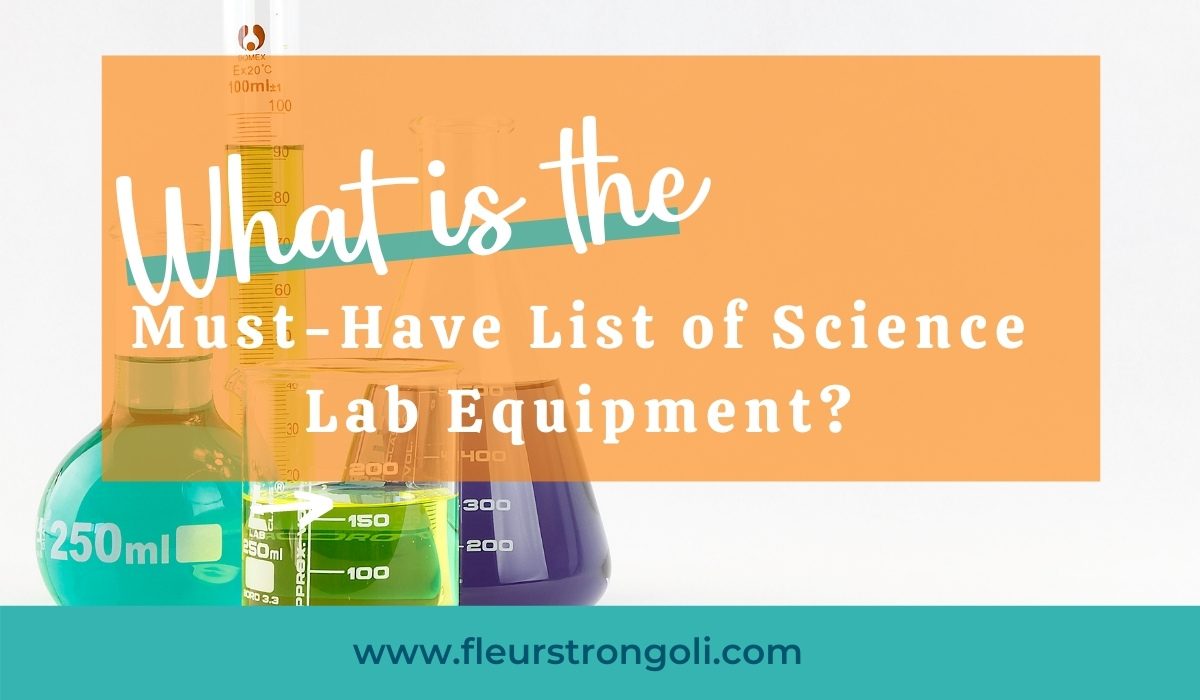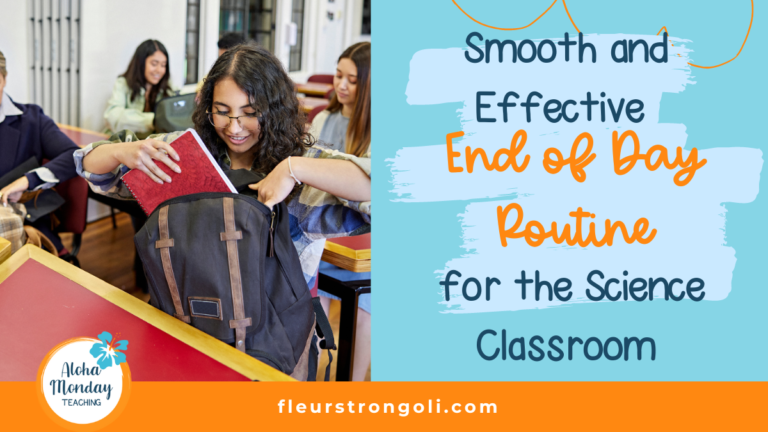What is the Must-Have List of Science Lab Equipment?
I’m a list person, and today I’m sharing my list of science lab equipment! I don’t know about you, but I’m a little addicted to lab equipment and supplies in my classroom. I like to make sure I have everything I may ever need! There are so many different lab supplies and materials that may not be “Science”, but can definitely be used for Science. So let’s narrow it down with the must-have list of Science lab equipment.
And check out my product Science Lab Equipment. Teach students about lab equipment and give them opportunities to practice using them safely.
In this Post
I’ll give you some ideas on how to get materials that you don’t have. Most materials are supplied by your school or district in science kits. I’ll also break down the list of Science lab equipment by category. The categories are safety equipment, measuring tools, glassware and other science equipment, grocery store items or consumables, and curriculum specific equipment.
Be sure to get your free guide 7 Daily Must-Do Routines to Run Your Science Classroom Like a Pro today!
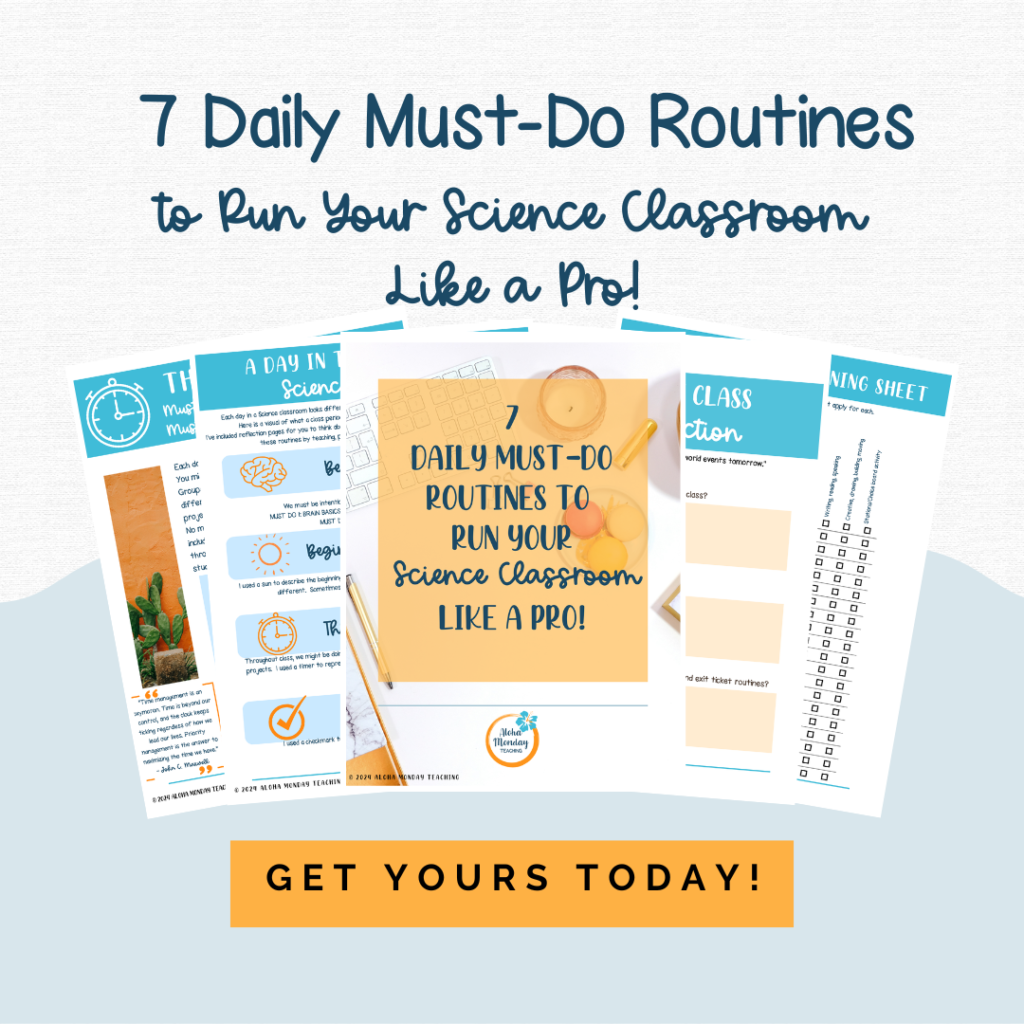
Disclosure: This post contains some affiliate links for your convenience. As an Amazon Associate I earn from qualifying purchases with no cost to you.
Getting Materials from your Science Lab Equipment List
First, how do you get these materials? Most districts or schools will supply certain lab equipment. And I understand that a lot of lab equipment may be old. There are several ways to obtain various lab equipment WITHOUT spending your own money.
1. Ask your school or district. Most schools or districts have a budget and can create purchase orders for materials. Your district or school may also have materials for you based on the adopted materials they have.
2. Ask your Parent-Teacher Organization for donations. Most PTOs will gladly give whatever they can to teachers. Find out if your school’s PTO has a classroom donation fund, or something similar.
3. Apply for grants or ask companies for donations. There are many ways to receive funding from grants. Some companies or organizations will require you to apply or complete a course or training to receive a grant. You might receive a prize that includes a grant. Or you could use a site such as Donors Choose. You could also ask companies for donations.
4. Ask parents for help. I personally don’t like asking parents for much, because I know some families may struggle. But I also know that many parents are more than willing to help out. If you need to ask parents for supplies, keep it simple. Choose items that may be purchased at a grocery store or for recyclable materials they may have at home.
5. The last resort is spending your own money. If you try all of the above, and you’re unable to get something you absolutely need, then this would be a final option.
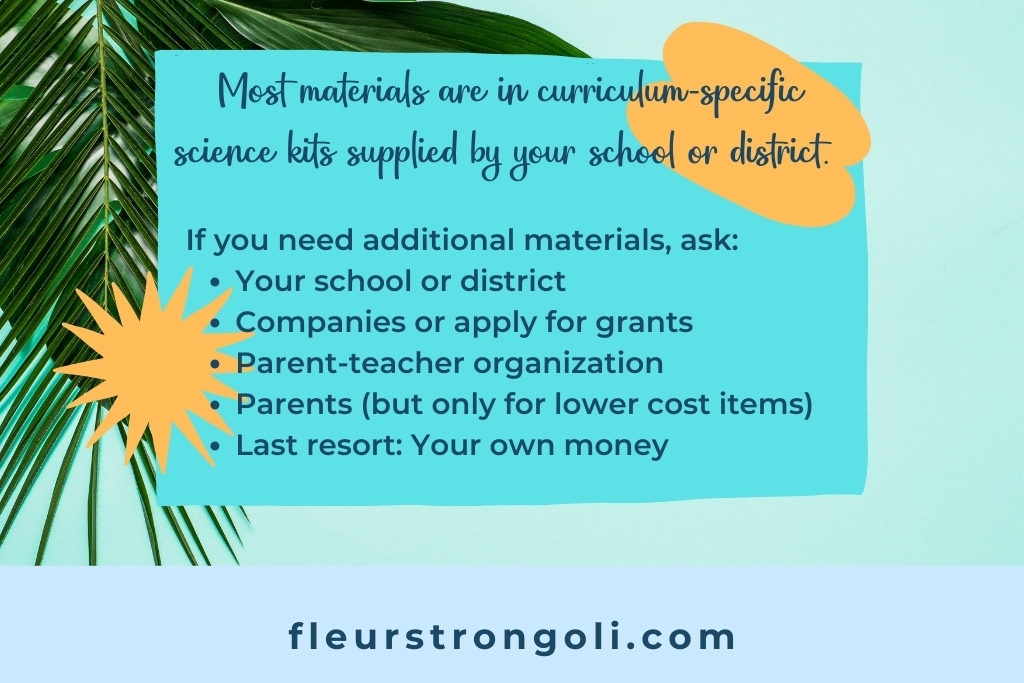
What materials are on the list of science lab equipment?
Safety Equipment
You must have safety equipment in your classroom. Most schools should have these supplies. If not, ask for them. For example, a fire extinguisher is likely required by the fire marshal in your city. Other materials you should have are a first aid kit, a fire blanket, safety goggles, and hand soap. Most Science classrooms will also have a safety shower and an eye-wash station. If yours doesn’t, improvise by using your sink instead.
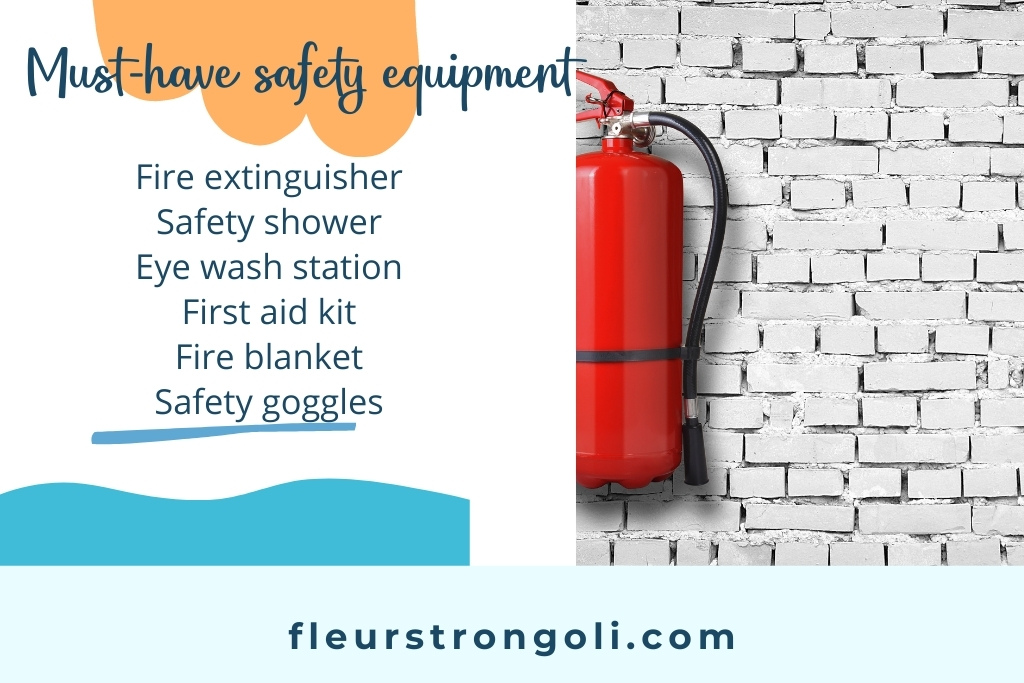
Measuring Tools
Science and Math go together. There will be times you will need students to measure various things such as length or distance, weight or mass, height, and temperature. Some measurement tools to have on hand are graduated cylinders, rulers, meter sticks, scales, triple beam balances, protractors, thermometers, and spring scales.
Most of these materials may already be in your science classroom or somewhere in your school. You may also find these in your science kits from your district, and they will pertain to what you are teaching. If you need other supplies, your school/district or PTO would be the first groups to ask.
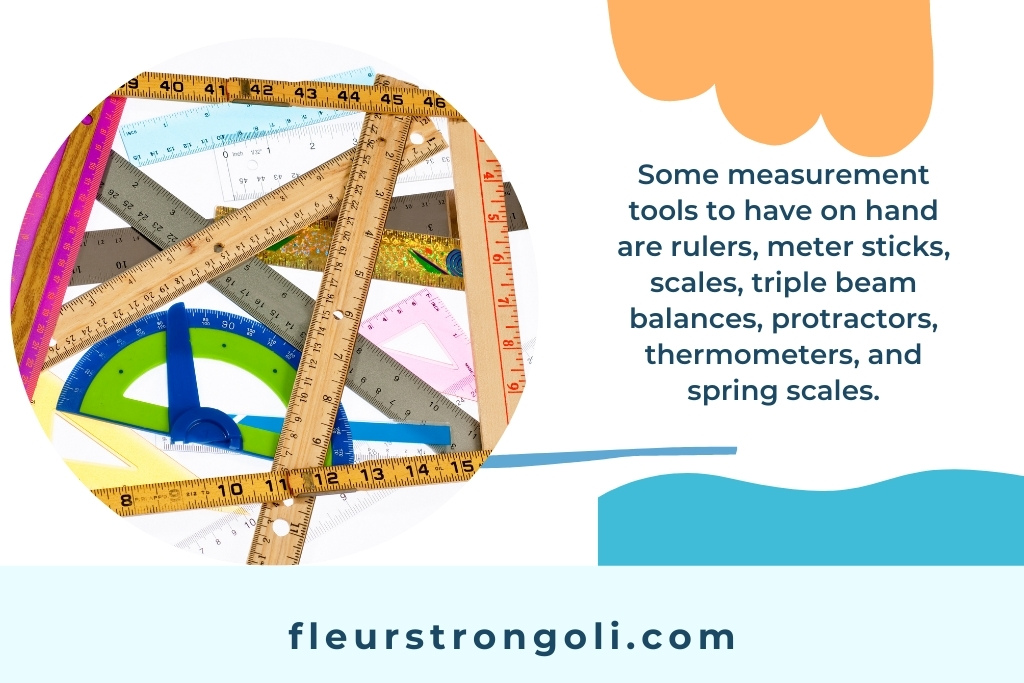
Glassware and other Science lab equipment
Oh, the fun stuff! This is what makes a science classroom an actual lab! Students, especially those in their first year of middle school, get so excited to use these!
Glassware includes beakers, graduated cylinders, test tubes, and Erlenmeyer flasks. You’ll want to have glassware in various sizes. With glassware, you’ll want to make sure you have the proper safety equipment such as beaker tongs, test tube racks, test tube cleaners, and test tube clamps.
Other Science lab equipment you’ll need to perform various lab activities are funnels, pipettes, corks, rubber stoppers, magnets, trays, and plastic tubs.
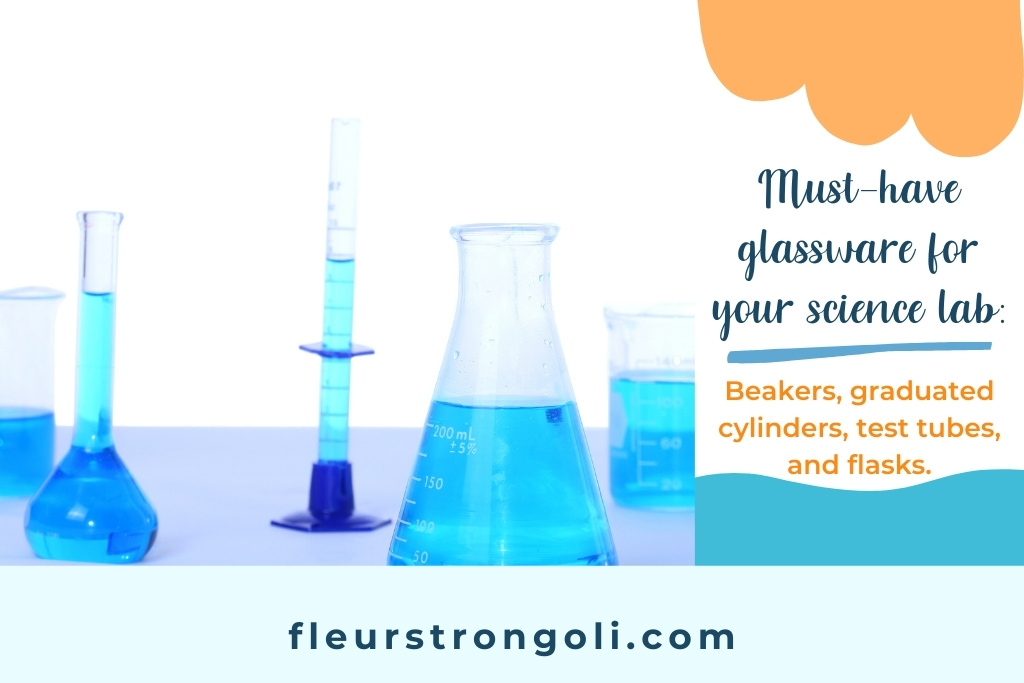
Grocery Store or Consumable Items
These are consumable materials that you purchase at a grocery store. Most of these may be in your science kits that are supplied by your district, since most curriculum developers include certain labs. But it’s helpful to have these handy for those labs or projects that aren’t in your adopted resources.
Here is a small list of items you should have in your science classroom:
Paper or cloth products– paper towels, plates, bowls, coffee filters, cheesecloth, lined paper, graph paper, white and colored paper, cardstock, construction paper, string
Plastic items– Ziploc bags, clear cups, cups of different sizes, straws, plastic wrap, spoons, knives, gloves
Liquid products– corn syrup, dish soap, oil, corn syrup, vinegar, food coloring, water, iodine
Food items– baking soda, salt, cornstarch
Kitchen items– toothpicks, popsicle sticks, foil, wax paper
School Supplies– glue sticks, liquid glue, masking tape, scotch tape, markers, crayons, colored pencils, scissors
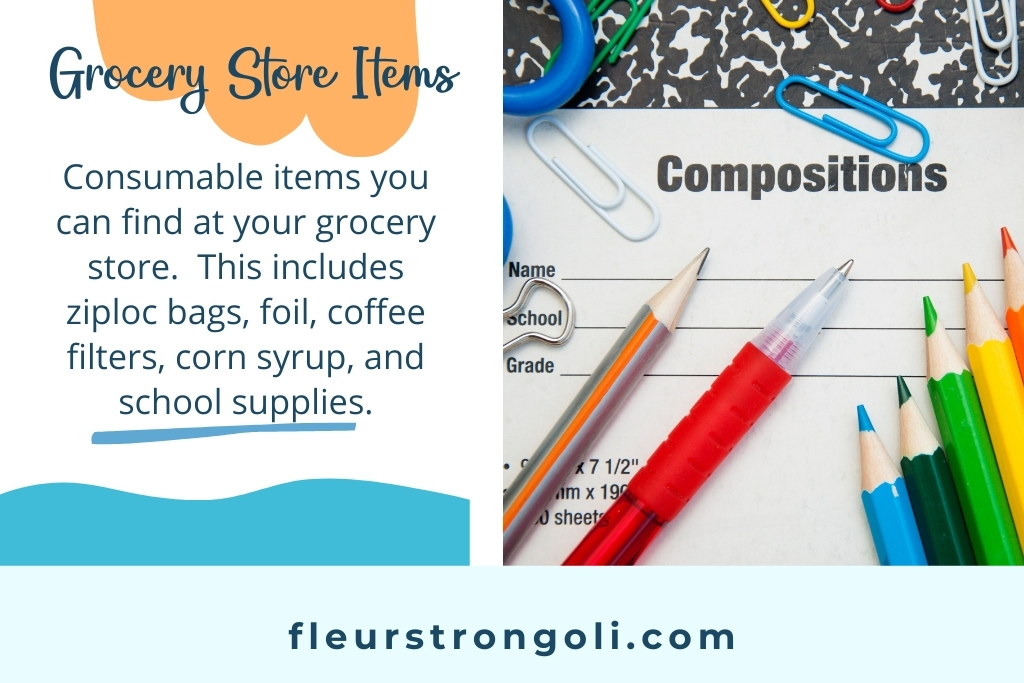
Curriculum Specific Lab Equipment
In middle school science classrooms, you will need specific tools to help you teach your curriculum. Most of the materials below will likely be in your science kits from your district’s adopted material or in a school science supply room. Here are some examples of specialized equipment you may want to have for different areas in Science.
Biology- microscopes, microscope camera, slides, agar, and petri dishes. You might also want models of cells or body systems and posters.
Chemistry- Periodic Table, chemicals, and Bunsen burners.
Earth Science– clay, dirt, fossils, rocks and minerals, and models and maps of Earth’s surface or ocean floors.
Physics- Objects that move such as balls or cars, ramps or materials to create ramps, batteries, wires, magnets, and light bulbs.
Space- Styrofoam balls, flashlights, a globe, posters and models.
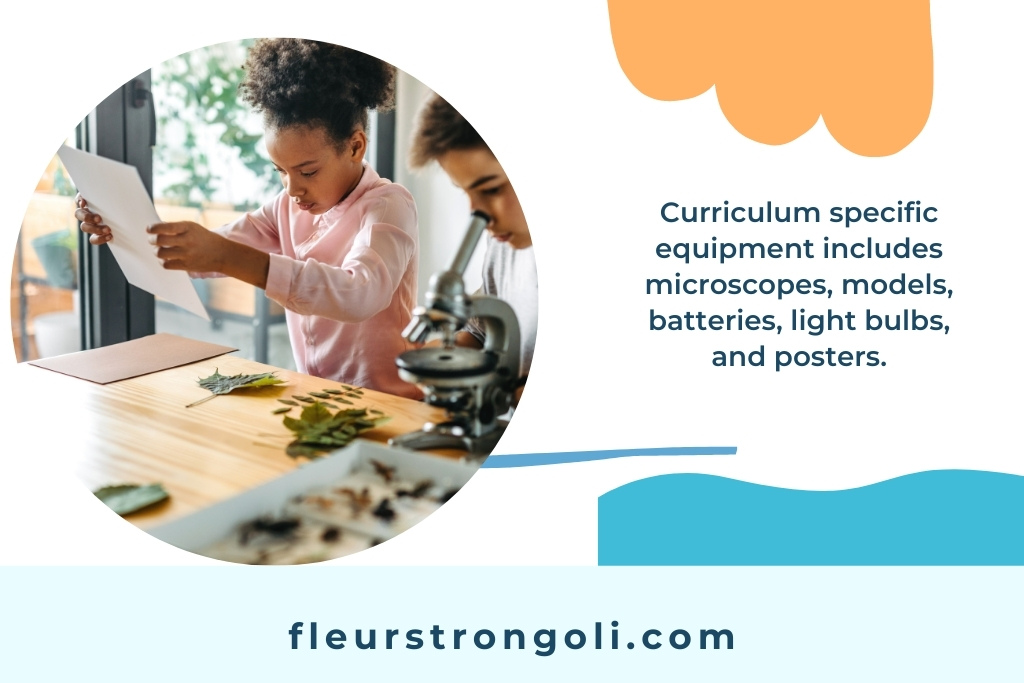
Wrap Up
A science classroom needs a lot of materials and equipment. Most districts supply these materials in the science kits that are suited for your curriculum.
If there is something that you need, but don’t have yet, ask for it! Start with your school or district, parent-teacher organization, apply for grants, ask companies for donations, and ask parents before using your own money. But remember, when asking parents, refrain from asking for costly items. Stick to those grocery store items or school supplies.
You will need safety equipment, measuring tools, glassware, science lab equipment, consumables, and school supplies. You’ll also need specific materials related to your curriculum.
Related Products for your Classroom
Science Lab Equipment – Teach your students about different lab equipment, and give them the practice they need to use equipment safely and properly.
Science Lab Safety Rules – A complete lab safety unit with VERY little prep! Great for middle school and upper elementary classrooms.
Fleur’s Favorite Resources – Here are some of my favorite materials I use in my classroom
Read More
Read 2 Simple Steps for an Effective Science Classroom Setup to get ideas on organizing all of this lab equipment.
How to Establish Classroom Expectations for Middle School goes over procedures students should be taught during Science class.
Your Turn
What are your must-haves in your science lab? What are some things you WISH you had?


